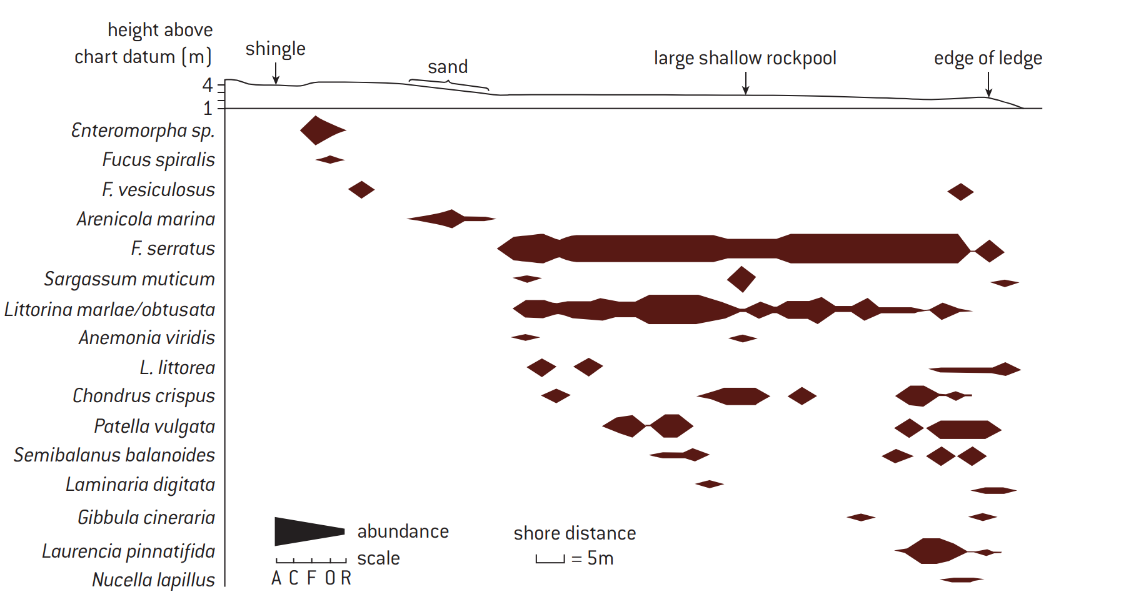TOPIC 2.4 - BIOMES, ZONATION AND SUCCESSION
biome (def).
K AND R STRATEGIST SPECIES
k strategist species (def). species that have a small number of offspring but invest time and energy into ensuring that they make it to adulthood
more suited to stable or steady state ecosystems - in which they outcompete r strategist species
population sizes are usually close to the carrying capacity of the system
r strategist species (def). reproduce quickly and rapidly, leaving their offspring after their birth
ZONATION
zonation (def). a change in a community along an environmental gradient
can be due to altitude, latitude or water cover - usually abiotic factors
where certain species can no longer live in the area due to these changes in abiotic factors - no longer fits their ecological niche
 figure : kite diagram used to show zonation
figure : kite diagram used to show zonation
kite diagrams are used to show the spread of the community with regards to the different zones
wider kites = higher abundance of that species in that zone
SUCCESSION
succession (def). the process of change over time in an ecosystem, involves :
pioneer community (def). organisms adapted to extreme conditions that allow other species to move into the area
typically r species - breed fast and therefore populate the area quickly
promote rapid growth within the ecosystem
intermediate community (def). the organisms that come in the middle of the process of succession and help diversify the ecosystem
largely k species with some r species
push out the pioneer species as r species cannot compete with intermediate species for space, food and nutrients
develops complex food webs and biodiversity that allows for a stable ecosystem
climax community (def). show the maximum amount of development that the ecosystem can undergo
mix of species and interactions
steady state equilibrium with complex food chains and a high rate of biodiversity
stable and self-sustaining
secondary succession (def). a shorter version of the succession process in which the land has already been colonized but has then suffered some change (usually human driven) that reverts it back to a near barren state - having already been colonized the process is shorter and more readily done
 figure : disturbances within an ecosystem
figure : disturbances within an ecosystem